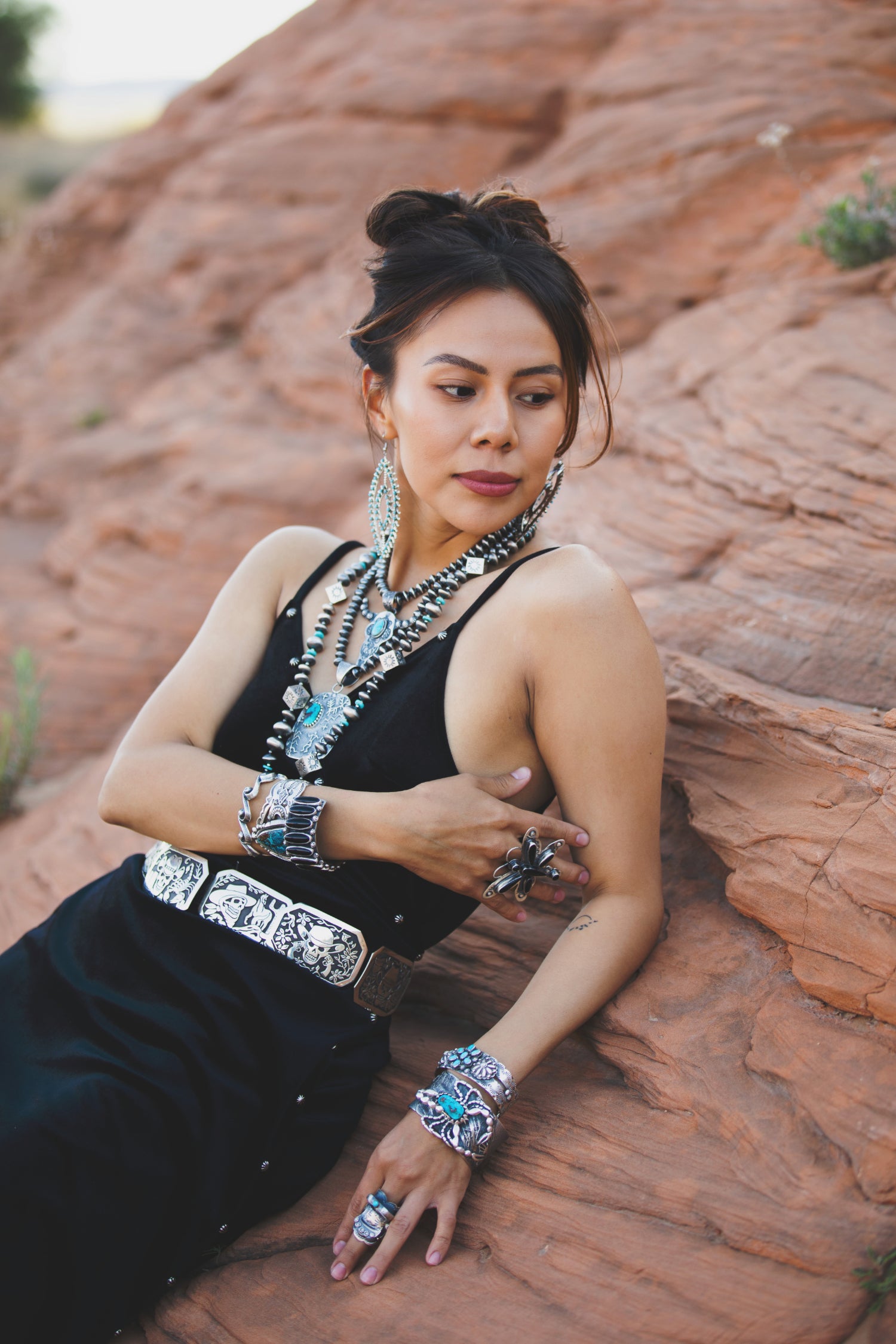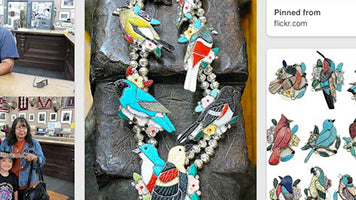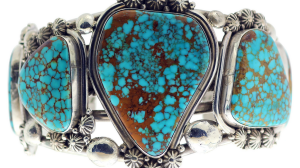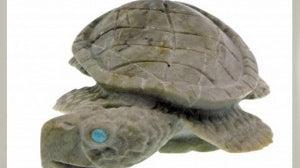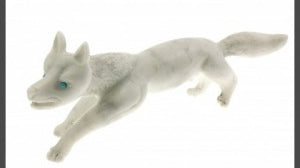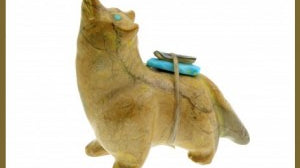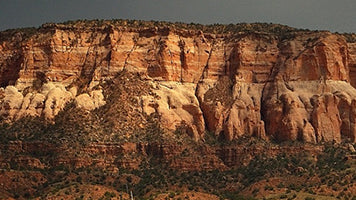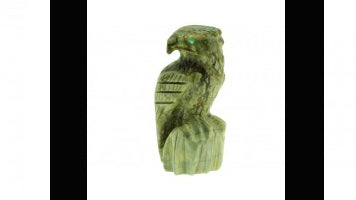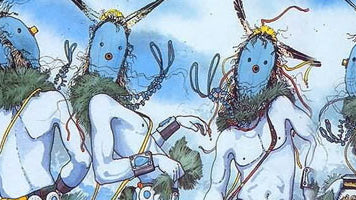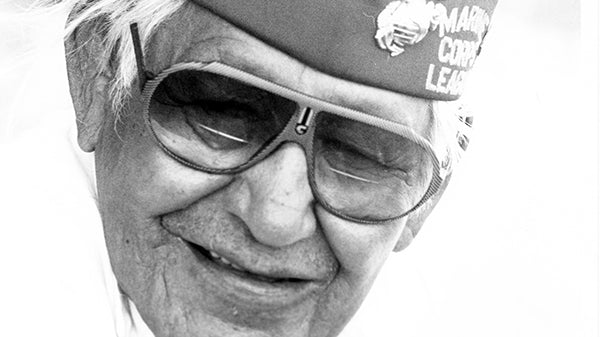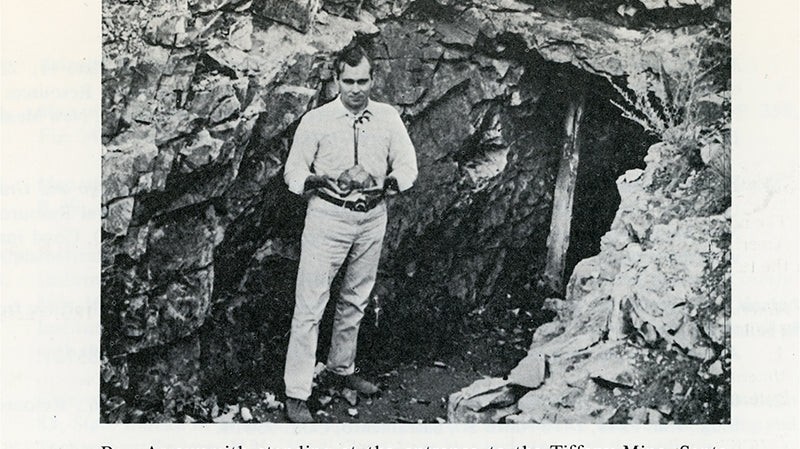Perry Null Trading
Zuni Indian Jewelry
The Zunis have adapted as the economics of the world around them forced changes. When the making of silver ornaments was introduced in the middle of the Nineteenth Century, they were among the first to pick up the art. For a long time they turned out attractive belts, necklaces, buttons and armbands of silver. Until the turn of the century it was hard to tell Zuni Indian Jewelry from Navajo, and many “experts” feel that Zuni silver was traded from the Navajo. Zunis maintain, with some photographic evidence, that it was the other way around.
Turquoise Mountain
Although located in the Mineral Park Mining District outside of Kingman, Arizona, the Turquoise Mountain mine has been considered a separate classic mine because of the difference in it’s appearance from other Kingman area turquoise. Turquoise Mountain turquoise has also been known as Old Man Turquoise. It has its own unique blue and blue-green color and many times has been found with a golden or beautiful rust colored spider webbing.
Wearing Water - Native American Jewelry
It is said that we create our own world, paint our own canvas so to speak. Thoughts are things, ideas take material form. “Whatever the mind contemplates materializes instantly.” It is in this light that we consider the conceptual world of Native peoples in the American southwest, those who live in a parched desert thirsty for water, yet through belief, ceremony, dress and Native American jewelry move confidently across their landscape in a protective cocoon of mist, germination, clouds and rain.
Turtle Zuni Fetish Meaning
If you have a turtle or tortoise fetish you may wonder what it represents or why it is significant. What is the Turtle Zuni Fetish Meaning? The turtle is the oldest symbol of Mother Earth and represents longevity and is used for healing. Some believe that the possession of a turtle fetish allows one to defy death. He also represents water, which in the high dessert climate of Zuni is a precious commodity.
Wolf Zuni Fetish Meaning
What is the Wolf Zuni Fetish Meaning? The Wolf is guardian and master or prey god of the East. He is the younger brother of bobcat in the hunting directional set. of fetishes. In Zuni culture a fetish represents the animal spirit thought to reside in the stone. The wolf represents not just successful hunting, but also the ability to work together for the good of the group because of its pack mentality. It is a teacher, pathfinder, and represents a sharing of knowledge. He teaches inner guidance and clarity.
Travertine Zuni Rock Fetish Carving Material
Travertine is often thought of for countertops, backsplashes, and floors, but it's also a great medium for Zuni fetish carvers. It is even referred to as "Zuni Rock". Its found extensively in the Four Corners area in the Grand Canyon and Glenwood Canyon in Colorado. Its also found throughout Texas, Oklahoma, and most notably in Yellowstone National Park. Travertine Zuni Rock can be polished to a smooth, shiny finish, and comes in a variety of colors from grey to coral-red.
Zuni Tribe
The Zuni Tribe, like many other tribes, have a very complex creation tale which includes stories of the various clans during the migration phase, when they were all looking for the “middle place.” Groups travelled to the four cardinal directions and when they didn’t find what they were looking for, came back to the center. The group that went East found Idiwanna (the Middle Place) first, followed by the other wanderers in due time.
Zuni Fetishes
One of the most popular arts, nearly equal in importance to Zuni jewelry, is Zuni fetishes. The origin of small figures carved of shell and native stone goes so far back into ancient history it may be considered always part of Zuni culture. Unlike other art forms, Zuni fetishes were the sole property of that tribe. Carved animals of the hunt and the field, were traded to Navajos and other Pueblos. Today the Navajos have added fetishes to their talents, but they did not make them traditionally.
The word fetish has negative connotations in American English, but it was applied to these small carvings because they have protective and healing qualities. The Zunis traditionally had six prey animals for the six cardinal directions (counting zenith and nadir—up and down) and the most senior prey animal is the mountain lion. These days the term “Beast Gods” is often used but the Zunis object to the designation as misleading. Clearly it is good marketing. It sounds more powerful than “prey animals.”
Yei and Yeibichai Navajo Rugs
We heard him coming from the green arbor at the eastern end of the long dance oval. Yeibitsai, Talking God, Maternal Grandfather of the Navajo Holy People, God of dawn, the eastern sky and animals of the chase. Yeibitsai precedes all the masked dancers on the last night of the Night Chant, a nine day healing ceremony that purifies a patient, unites him with the power and presence of the Holy people (Yei), and restores him to the world in a state of wholeness. For this reason many people refer to the entire ceremony as “the Yeibichai.”
Your Connection to Native American Art and Culture
We know that you are a fan of Native American Art and Culture. That is what Perry Null Trading is all about. On our website you will find endless pictures of gorgeous art on our photo stream. We have many interviews from today's top Native American artists, and stories about the people and places around the Four Corners that help you understand this area. We run a forum where you can learn more about Native American art. And, of course we have a wide selection of authentic art that is ready for you to add to your collection.
Carl Gorman: Artist & Navajo Statesman
Early in life Carl Gorman did well as a bootlegger on the Reservation. Then he was one of the few native traders. His father Nelson Gorman had a post near Chinle. Carl’s language skills were obvious—during the infamous stock reduction, he was used as a Navajo translator for the government—and he was one of the first Code Talkers taken.
The Chalchihuitl (Turquoise) Question
This is the title of Chapter VI in the seminal book Turquoisby Joseph E. Pogue [who left the e off the end], published in 1915 by The National Academy of Sciences. More than 100 years later it is still a question.

